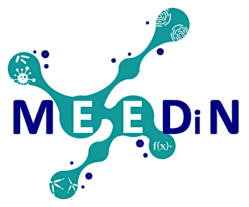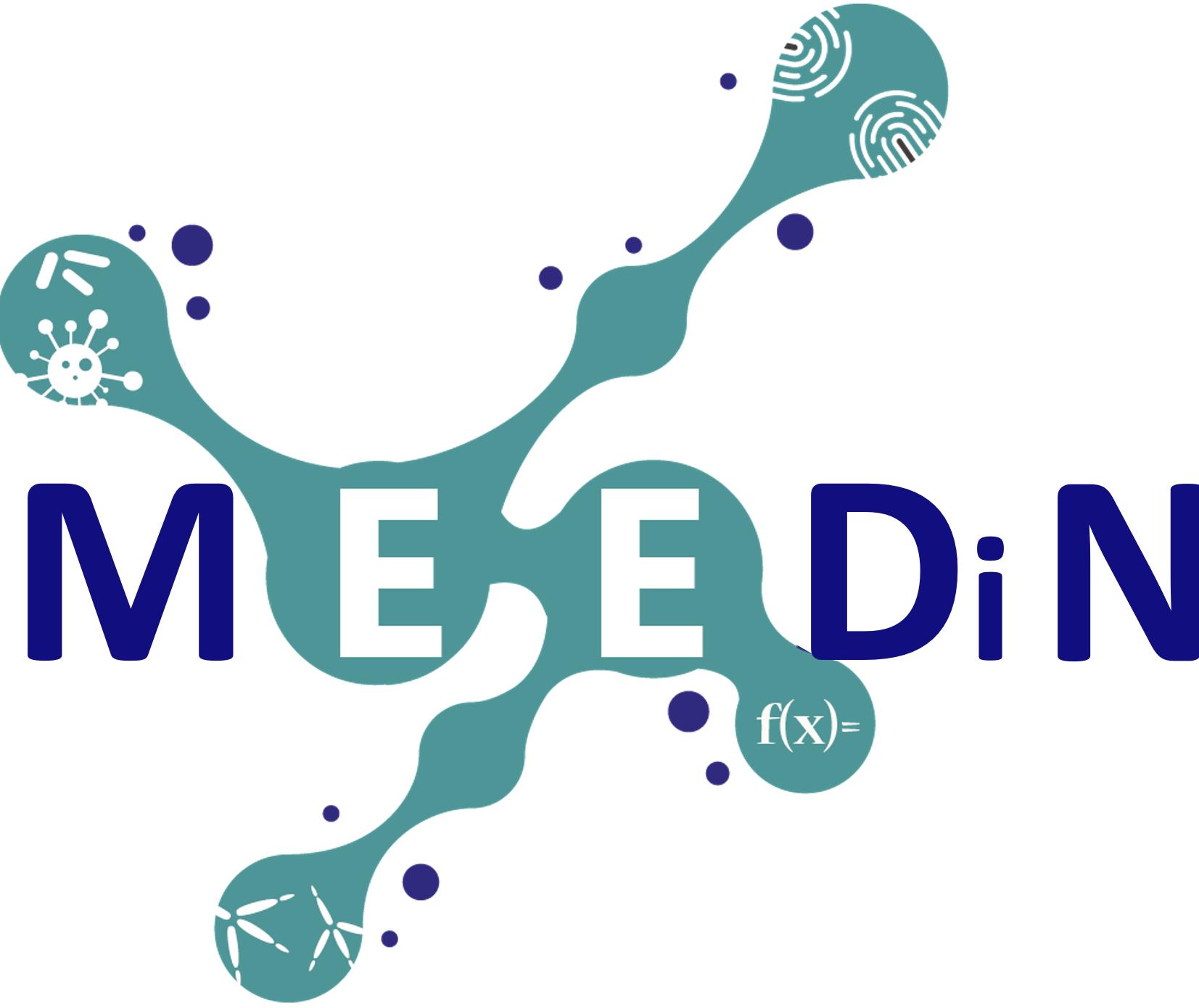Project funding: European Research Council Consolidator Grant
CURRENT TEAM MEMBERS

Lab manager, and molecular biologist extraordinaire.
PAST TEAM MEMBERS
CURRENT PROJECTS

learn more ...

Collaborators: Céline BRESSOLETTE (CHU Nantes, IP), Dorian McIlroy (CHU Nantes), Franck HALARY (CRTI Nantes)
learn more ...
Project funding: Agence National de la Recherche
RELEVANT PUBLICATIONS Click here for the full list

Genome Biology and Evolution (link to Pubmed entry)
click for abstract ...
Codon Usage Preferences (CUPrefs) describe the unequal usage of synonymous codons at the gene, chromosome, or genome levels. Numerous indices have been developed to evaluate CUPrefs, either in absolute terms or with respect to a reference. We introduce the normalized index COUSIN (for COdon Usage Similarity INdex), that compares the CUPrefs of a query against those of a reference and normalizes the output over a Null Hypothesis of random codon usage. The added value of COUSIN is to be easily interpreted, both quantitatively and qualitatively. An eponymous software written in Python3 is available for local or online use (http://cousin.ird.fr). This software allows for an easy and complete analysis of CUPrefs via COUSIN, includes seven other indices, and provides additional features such as statistical analyses, clustering, and CUPrefs optimization for gene expression. We illustrate the flexibility of COUSIN and highlight its advantages by analyzing the complete coding sequences of eight divergent genomes. Strikingly, COUSIN captures a bimodal distribution in the CUPrefs of human and chicken genes hitherto unreported with such precision. COUSIN opens new perspectives to uncover CUPrefs specificities in genomes in a practical, informative, and user-friendly way.
Read more
Philos Trans R Soc Lond B Biol Sci (link to Pubmed entry)
click for abstract ...
Papillomaviruses (PVs) are ancient viruses infecting vertebrates, from fishes to mammals. Although the genomes of PVs are small and show conserved synteny, PVs display large genotypic diversity and ample variation in the phenotypic presentation of the infection. Most PV genomes contain two small early genes E6 and E7. In a bunch of closely related human papillomaviruses (HPVs), the E6 and E7 proteins provide the viruses with oncogenic potential. The recent discoveries of PVs without E6 and E7 in different fish species place a new root on the PV tree, and suggest that ancestral PVs consisted of the minimal PV backbone E1-E2-L2-L1. Bayesian phylogenetic analyses date the most recent common ancestor of the PV backbone to 424 million years ago (Ma). Common ancestry tests on extant E6 and E7 genes indicate that they share a common ancestor dating back to at least 184 Ma. In AlphaPVs infecting Old World monkeys and apes, the appearance of the E5 oncogene 53-58 Ma concurred with (i) a significant increase in substitution rate, (ii) a basal radiation and (iii) key gain of functions in E6 and E7. This series of events was instrumental to construct the extant phenotype of oncogenic HPVs. Our results assemble the current knowledge on PV diversity and present an ancient evolutionary timeline punctuated by evolutionary innovations in the history of this successful viral family.
Read more
Genes acquired by horizontal gene transfer (HGT) may provide the recipient organism with potentially new functions, but proper expression level and integration of the transferred genes in the novel environment are not granted. Notably, transferred genes can differ from the receiving genome in codon usage preferences, leading to impaired translation and reduced functionality. Here, we characterize the genomic and proteomic changes undergone during experimental evolution of Escherichia coli after HGT of three synonymous versions, presenting very different codon usage preference, of an antibiotic resistance gene. The experimental evolution was conducted with and without the corresponding antibiotic and the mutational patterns and proteomic profiles after 1,000 generations largely depend on the experimental growth conditions (e.g., mutations in antibiotic off-target genes), and on the synonymous gene version transferred (e.g., mutations in genes responsive to translational stress). The transfer of an exogenous gene extensively modifies the whole proteome, and these proteomic changes are different for the different version of the transferred gene. Additionally, we identified conspicuous changes in global regulators and in intermediate metabolism, confirmed the evolutionary ratchet generated by mutations in DNA repair genes and highlighted the plasticity of bacterial genomes accumulating large and occasionally transient duplications. Our results support a central role of HGT in fuelling evolution as a powerful mechanism promoting rapid, often dramatic genotypic and phenotypic changes. The profound reshaping of the pre-existing geno/phenotype allows the recipient bacteria to explore new ways of functioning, far beyond the mere acquisition of a novel function.
Read more
Molecular Biology and Evolution (link to Pubmed entry)
click for abstract ...
Every human suffers through life a number of papillomaviruses (PVs) infections, most of them asymptomatic. A notable exception are persistent infections by Human papillomavirus 16 (HPV16), the most oncogenic infectious agent for humans and responsible for most infection-driven anogenital cancers. Oncogenic potential is not homogeneous among HPV16 lineages, and genetic variation within HPV16 exhibits some geographic structure. However, an in-depth analysis of the HPV16 evolutionary history was still wanting. We have analyzed extant HPV16 diversity and compared the evolutionary and phylogeographical patterns of humans and of HPV16. We show that codivergence with modern humans explains at most 30% of the present viral geographical distribution. The most explanatory scenario suggests that ancestral HPV16 already infected ancestral human populations and that viral lineages co-diverged with the hosts in parallel with the split between archaic Neanderthal-Denisovans and ancestral modern human populations, generating the ancestral HPV16A and HPV16BCD viral lineages, respectively. We propose that after out-of-Africa migration of modern human ancestors, sexual transmission between human populations introduced HPV16A into modern human ancestor populations. We hypothesize that differential coevolution of HPV16 lineages with different but closely related ancestral human populations and subsequent host-switch events in parallel with introgression of archaic alleles into the genomes of modern human ancestors may be largely responsible for the present-day differential prevalence and association with cancers for HPV16 variants.
Read more
Evolution, Medicine and Public Health (link to Pubmed entry)
click for abstract ...
Papillomaviruses (PVs) are a numerous family of small dsDNA viruses infecting virtually all mammals. PVs cause infections without triggering a strong immune response, and natural infection provides only limited protection against reinfection. Most PVs are part and parcel of the skin microbiota. In some cases, infections by certain PVs take diverse clinical presentations from highly productive self-limited warts to invasive cancers. We propose PVs as an excellent model system to study the evolutionary interactions between the immune system and pathogens causing chronic infections: genotypically, PVs are very diverse, with hundreds of different genotypes infecting skin and mucosa; phenotypically, they display extremely broad gradients and trade-offs between key phenotypic traits, namely productivity, immunogenicity, prevalence, oncogenicity and clinical presentation. Public health interventions have been launched to decrease the burden of PV-associated cancers, including massive vaccination against the most oncogenic human PVs, as well as systematic screening for PV chronic anogenital infections. Anti-PVs vaccines elicit protection against infection, induce cross-protection against closely related viruses and result in herd immunity. However, our knowledge on the ecological and intrapatient dynamics of PV infections remains fragmentary. We still need to understand how the novel anthropogenic selection pressures posed by vaccination and screening will affect viral circulation and epidemiology. We present here an overview of PV evolution and the connection between PV genotypes and the phenotypic, clinical manifestations of the diseases they cause. This differential link between viral evolution and the gradient cancer-warts-asymptomatic infections makes PVs a privileged playground for evolutionary medicine research.
Read moreNEWS

Sed ut perspiciatis unde omnis iste natus error sit voluptatem accusantium doloremque laudantium, totam rem aperiam, eaque ipsa quae ab illo inventore veritatis et quasi architecto beatae vitae dicta sunt explicabo.
more ...
MAIN COLLABORATORS
PHOTO GALLERY
Montpellier


